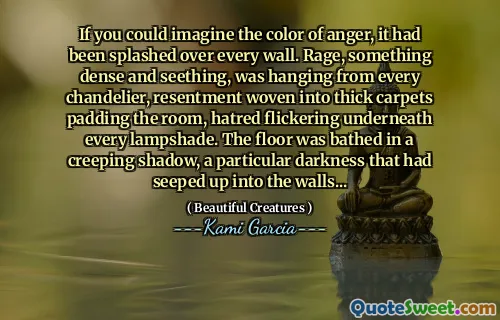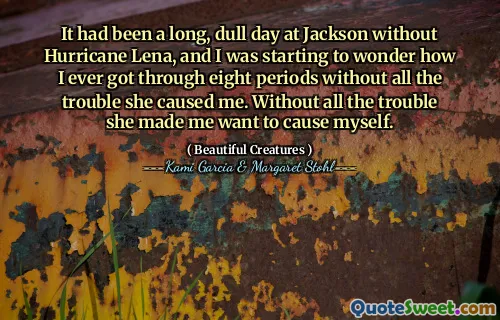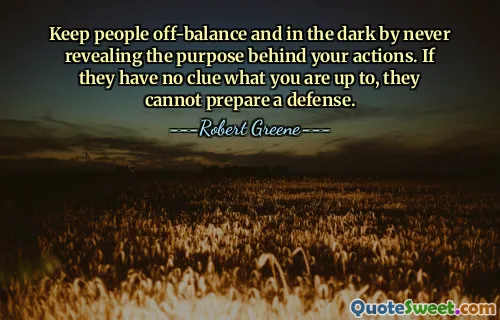
If you could imagine the color of anger, it had been splashed over every wall. Rage, something dense and seething, was hanging from every chandelier, resentment woven into thick carpets padding the room, hatred flickering underneath every lampshade. The floor was bathed in a creeping shadow, a particular darkness that had seeped up into the walls...
This vivid description paints a powerful and visceral image of anger and its pervasive nature within a space. The imagery of colors—such as splashes of anger painted across walls—evokes how emotional turmoil can consume and transform the physical environment, reflecting internal states outwardly. The mention of rage being dense and seething suggests something almost tangible, a force that weighs heavily on the atmosphere, reducing it to an oppressive environment. Resentment woven into carpets implies that toxins of bitterness settle into the very foundation of the space, becoming ingrained and difficult to escape. The flickering hatred beneath lampshades indicates a flickering, unstable presence, hinting at the volatility that anger entails. The creeping shadow covering the floor symbolizes how darkness and despair spread gradually, seeping into every corner of one's reality.
This description encapsulates the destructive potential of unrestrained emotions like anger and resentment, illustrating how they can distort perception and influence the surroundings. It also emphasizes the importance of emotional awareness and managing such intense feelings before they irreparably taint our inner and outer worlds. The use of such strong, sensory-laden imagery invites readers to reflect on the power of emotion and how it shapes not just our internal experience but also the environment we create and inhabit. In literature, such vivid portrayals deepen our understanding of characters' inner struggles, reminding us of the importance of finding balance and understanding amidst overwhelming emotions.
This quote challenges us to think about the visual and tangible manifestations of feelings like anger, encouraging introspection on how we handle negativity and the impact it has on our lives and surroundings.







